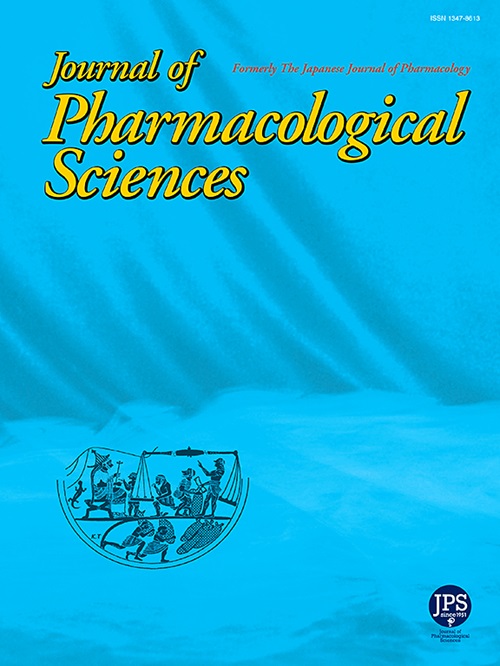脊髓背角神经元参与大麻素受体激动剂对大鼠神经性异常性行为的缓解作用
IF 2.9
3区 医学
Q2 PHARMACOLOGY & PHARMACY
引用次数: 0
摘要
机械性异常痛是由无害的触觉刺激引起的疼痛,是神经性疼痛的标志性症状,通常对现有的治疗方法有抵抗力。大麻素被广泛用于疼痛管理;然而,它们对神经性机械性异常痛的治疗机制尚不清楚。利用转基因大鼠,光遗传学刺激皮肤中的触摸感应Aβ纤维,我们发现鞘内给药合成大麻素WIN 55,212-2,减轻了Aβ纤维来源的神经性异常性疼痛。此外,我们将含有大鼠大麻素受体1 (CB1受体)(由Cnr1编码)启动子和tdTomato或靶向CB1受体的短发夹RNA的腺相关病毒载体注射到脊髓背角(SDH),并证明Cnr1+ SDH神经元中CB1受体的条件敲低会减弱鞘内给药WIN 55,212-2的抗异变作用。电生理分析显示,Cnr1+ SDH神经元接受来自初级传入Aβ纤维的兴奋性突触输入。总之,我们的研究结果表明,Cnr1+ SDH神经元中的CB1受体是鞘内WIN 55,212-2减轻神经性异常性疼痛的分子和细胞靶点。本文章由计算机程序翻译,如有差异,请以英文原文为准。
Spinal dorsal horn neurons involved in the alleviating effects of cannabinoid receptor agonists on neuropathic allodynia-like behaviors in rats
Mechanical allodynia, the pain caused by innocuous tactile stimuli, is a hallmark symptom of neuropathic pain that is often resistant to currently available treatments. Cannabinoids are widely used for pain management; however, their therapeutic mechanisms for neuropathic mechanical allodynia remain unclear. Using transgenic rats that enable to optogenetically stimulate touch-sensing Aβ fibers in the skin, we found that the intrathecal administration of the synthetic cannabinoid, WIN 55,212-2, alleviated the Aβ fiber-derived neuropathic allodynia. Furthermore, we injected adeno-associated virus vectors incorporating the rat cannabinoid receptor 1 (CB1 receptor) (encoded by Cnr1) promoter and tdTomato or short hairpin RNA targeting the CB1 receptor into the spinal dorsal horn (SDH) and demonstrated that the conditional knockdown of CB1 receptors in Cnr1+ SDH neurons attenuates the anti-allodynic effects of intrathecally administered WIN 55,212-2. Electrophysiological analysis revealed that Cnr1+ SDH neurons received excitatory synaptic inputs from the primary afferent Aβ fibers. Collectively, our results suggest that the CB1 receptors in Cnr1+ SDH neurons are molecular and cellular targets of intrathecal WIN 55,212-2 to alleviate neuropathic allodynia.
求助全文
通过发布文献求助,成功后即可免费获取论文全文。
去求助
来源期刊
CiteScore
6.20
自引率
2.90%
发文量
104
审稿时长
31 days
期刊介绍:
Journal of Pharmacological Sciences (JPS) is an international open access journal intended for the advancement of pharmacological sciences in the world. The Journal welcomes submissions in all fields of experimental and clinical pharmacology, including neuroscience, and biochemical, cellular, and molecular pharmacology for publication as Reviews, Full Papers or Short Communications. Short Communications are short research article intended to provide novel and exciting pharmacological findings. Manuscripts concerning descriptive case reports, pharmacokinetic and pharmacodynamic studies without pharmacological mechanism and dose-response determinations are not acceptable and will be rejected without peer review. The ethnopharmacological studies are also out of the scope of this journal. Furthermore, JPS does not publish work on the actions of biological extracts unknown chemical composition.

 求助内容:
求助内容: 应助结果提醒方式:
应助结果提醒方式:


